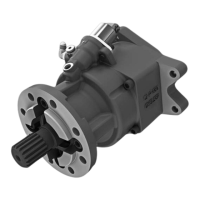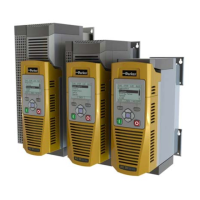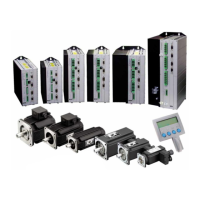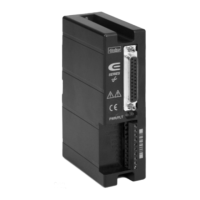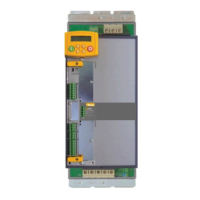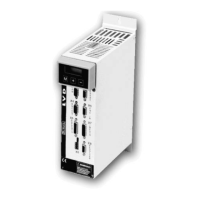Control Loops 5-3
DC590+ Series DC Digital Drive
A. If a very high motor discontinuous current boundary was the cause of failure, then the discontinuous-region manual tuning process needs to
be applied as follows:
1. Set the DISCONTINUOUS parameter to 0, which selects adaptive current control off. When operating in this mode, disable the Missing
Pulse alarm, since it is normally masked in the discontinuous region, and it will otherwise give spurious trips at low currents.
2. Set PROP. GAIN to a low level (typically 1), since it is ineffectual in the discontinuous current operating region.
3. Set the INT. GAIN to a moderate level (typically 10), sufficient to give fast response throughout the discontinuous current region.
B. If imbalance in the three-phase voltages of the supply is the cause of failure then the PI-control manual tuning process needs to be applied as
follows:
1. Set FIELD ENABLE to Disabled and clamp the motor shaft, to prevent rotation.
2. Attach an oscilloscope to the control board armature current monitor test-point (test point IA [see page
4H5-5], scaled for 1.1V = 100%
rated armature current, +ve = reverse bridge, -ve = forward bridge). The scaled armature current value can also be seen in the CURRENT
FEEDBACK diagnostic.
3. Run the drive with a positive speed demand, gradually increasing MAIN CURR. LIMIT until the armature current pulses are seen to just
join up. At this point, enter the value of CURRENT FEEDBACK into the DISCONTINUOUS parameter.
4. Enable the I DMD. ISOLATE parameter (or supply 24V to terminal C8). Use a toggling square-wave (< 20Hz) on the direct demand
input (terminal A3) to generate current steps above the discontinuous region. Alternately increase PROP. GAIN and INT. GAIN, as far as
possible, until the current loop response is correct (see Tuning Hints below).
Current Loop controls incorrectly set.
Slower oscillatory response = I gain
too high
8
8
9
Current Loop controls incorrectly set.
Rapid alternating oscillation = P gain
too high
Current Loop controls correctly set.
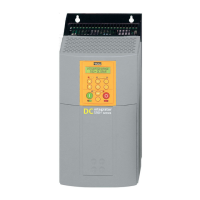
